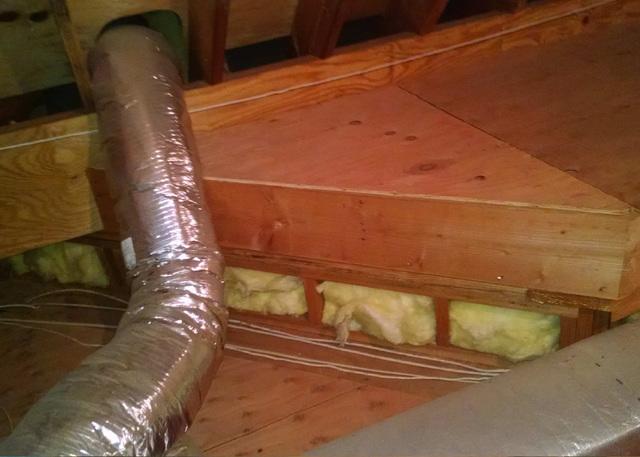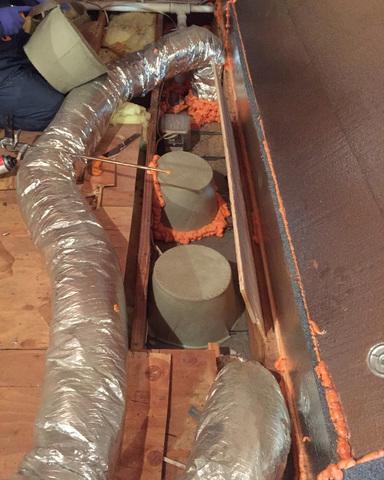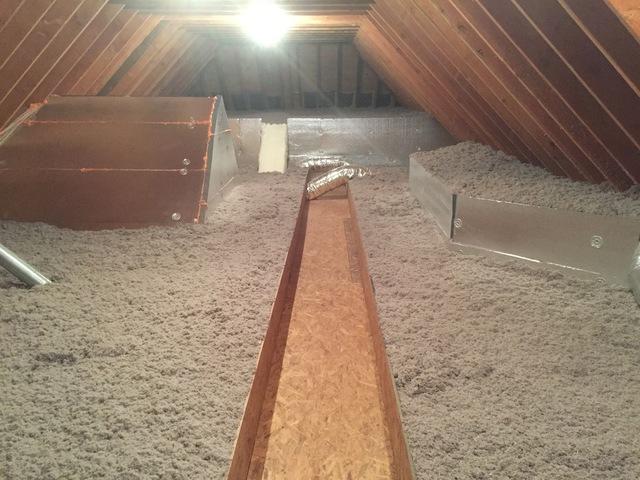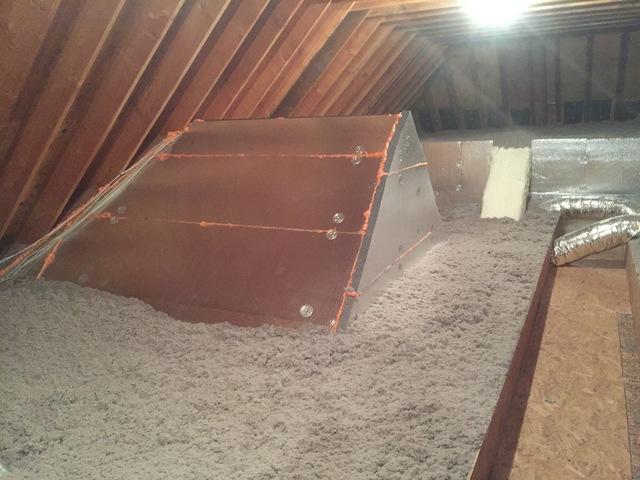
Multi-Level Attic
The fiberglass insulation between the higher and lower levels of the attic doesn't stop the real energy loss problem: air leaks. Conditioned air from the lower levels of the home is free to escape into the attic, making this home drafty.

Air Sealing
The first step to insulating this attic was to air seal it. Our team used expanding foam to ensure that all gaps, cracks, and holes were sealed.

Can Light Covers
Recessed lighting is a great feature in a home. However, the lights also create space for air to flow into the attic. To prevent this, we installed our fireproof can light covers over the lights, and sealed the edges with foam to keep the conditioned air in the house!

Blown Cellulose Insulation
After all the air leaks were sealed, we used our TruSoft blown cellulose insulation to cover the attic. Cellulose can match or exceed the insulation value of fiberglass, with R-values as high as R-4 per inch. And thanks to treatment with natural borate compounds, cellulose insulation won't catch fire. The same treatment discourages the presence of insects, rodents and mold.

Multi-Level Attic Insulation
To solve the problem that a multi-level attic presents, our team used SilverGlo insulation to cover the gaps and walls between one attic height and the next. After sealing the seams with expanding foam, no air was able to pass between the attic and the rooms beneath!

